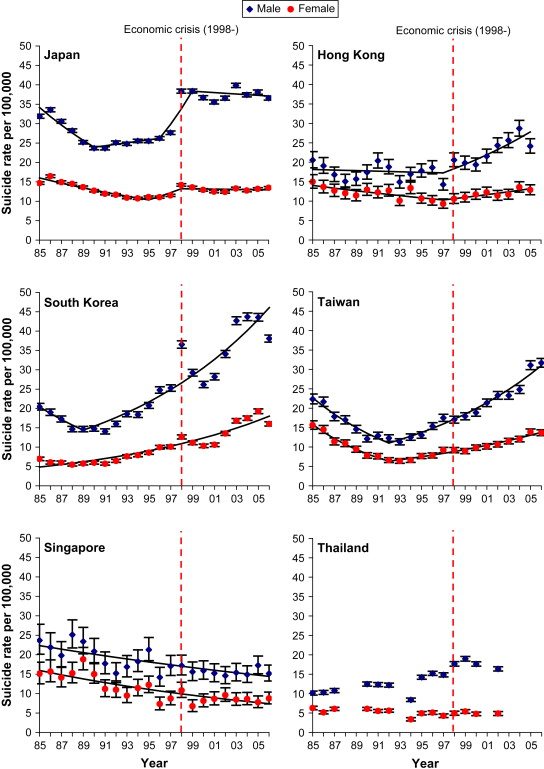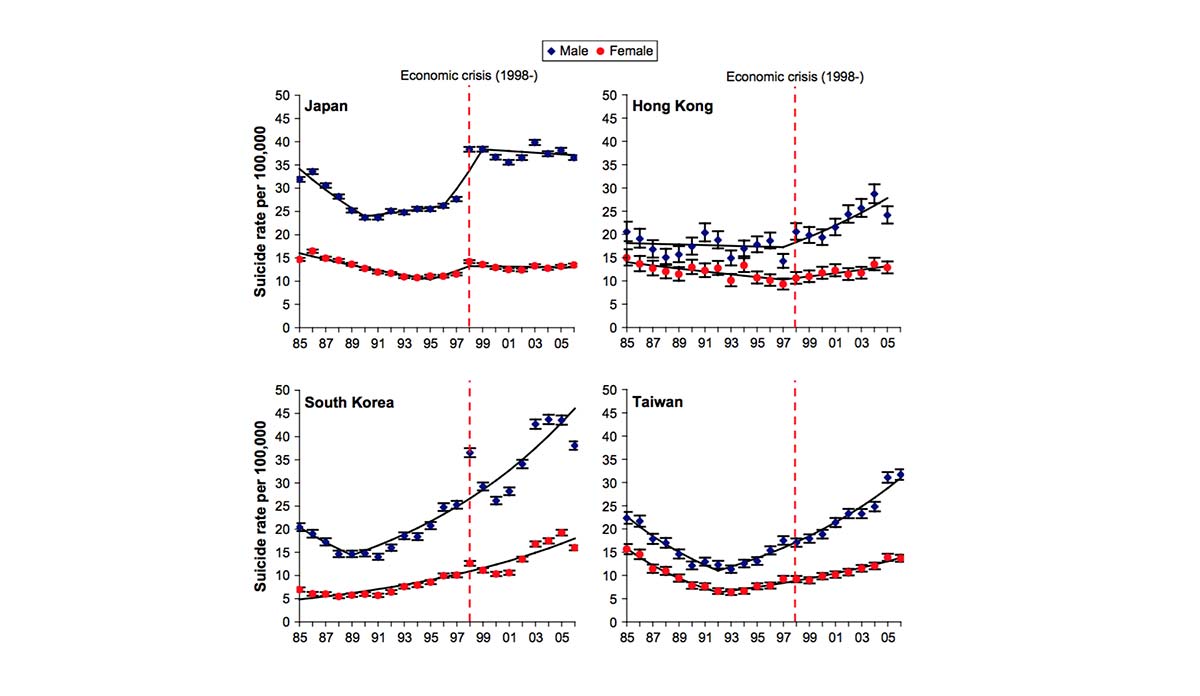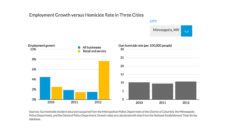Risk of suicide is a complex, multifaceted issue that is notoriously hard to gauge patient by patient. But on a population level there are indicators that can predict an uptick. One such factor is the state of the economy. The above graph, from a 2009 Social Science and Medicine article by Chang, et al., shows the impact of the 1997 Asian economic recession on suicide rates.
There were very large increases in suicide rates per 100,000 people in Japan and South Korea, as well as increasing rates in Hong Kong, Taiwan and Thailand. Singapore was the only country listed whose rate was largely unaffected.
This mirrors large increase in suicides in the United States following the great recession of 2008. Katherine A. Hempstead and Julie A. Phillips, in their 2009 American Journal of Preventive Medicine article, write: “The sharpest increase in external circumstances appears to be temporally related to the worst years of the Great Recession, consistent with other work showing a link between deteriorating economic conditions and suicide.”
Suicide is a tremendously complex social issue that cannot be effectively addressed by simply getting more people into mental health treatment. Much like other public health problems, it must be approached holistically, with the acknowledgement that social determinants are an effective indicator of suicide risk.

Databyte and Photo via Shu-Sen Chang et. al, Was the Economic Crisis 1997–1998 Responsible for Rising Suicide Rates in East/Southeast Asia? A Time–Trend Analysis for Japan, Hong Kong, South Korea, Taiwan, Singapore and Thailand. Social Science & Medicine.
If you are having thoughts of suicide, call the National Suicide Prevention Lifeline at 1-800-273-8255 or visit suicidepreventionlifeline.org.














